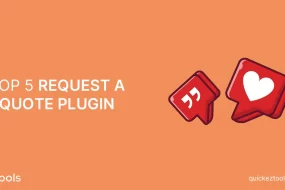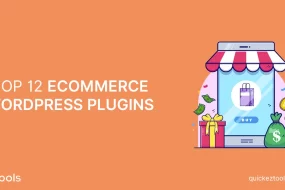
Web Design Tools are important for creating functional and visually appealing websites. In this article, we’ll explore and compare the top 10 web design tools available, examining their use cases, features, and pricing. Whether you need tools for wireframing, prototyping, or gathering feedback on designs, we’ve got you covered with comprehensive insights.
Best Web Design Tools
- Figma
- Adobe XD
- Canva
- Webflow
- InVision
- Sketch
- WordPress
- Designmodo
- GoProof
- Marvel
Related Article: Top 10 E-commerce Platforms in 2024
Figma

Figma is a web design tool that enables designers to collaborate in real time. It’s not just a design tool, but also a platform for prototyping and iterating quickly. With Figma, you can easily turn your ideas into interactive web experiences, regardless of whether you’re sketching out wireframes, designing detailed interfaces, or creating animated prototypes.
Figma is equipped with all the necessary tools to bring your vision to life and share it with stakeholders and clients.
Key Features:
- Real-time collaborative design.
- Vector-based editing and design tools.
- Integrated prototyping functionalities.
- Design components for efficient reuse of UI elements across web pages.
- Extensive plugin system for expanding functionality.
| Pros | Cons |
| Real-time collaboration, platform flexibility (compatible with browsers and desktop apps), vibrant community of designers sharing templates and designs. | Although user-friendly for designers, individuals without design experience may initially face some difficulties. |
Alternatives: Sketch, Adobe XD.
Pricing: Free | $12/user/month | Enterprise plans.
Adobe XD

Adobe XD is a design tool that uses vectors and is integrated into the Adobe Creative Cloud suite. It has been designed specifically for app and website designers. Adobe XD offers a range of tools to cater to different design needs, such as designing icons, call-to-action buttons, and complex web pages. The tool also has collaborative features that simplify teamwork, making the design process more efficient.
Key Features:
- Vector-based design tools optimized for web and app interfaces.
- Easy integration with Adobe Creative Cloud apps like Photoshop and Illustrator.
- Comprehensive web design tool comprising grids, responsive resize, and asset libraries.
- Interactive prototyping capabilities for dynamic designs.
- Auto-animate feature for effortless transition and motion design
| Pros | Cons |
| Integration with Adobe’s design tools enables compatibility and prototyping. | Individuals not familiar with Adobe may face a learning curve. Pricing could be challenging for small teams compared to alternatives. |
Alternatives: Axure RP, Gravit Designer
Pricing: $84.99 user/- per month.
Canva

Canva makes designing easy for both designers and non-designers with its intuitive interface. It offers a range of pre-made templates to actualize your ideas easily.
Key Features:
- Drag-and-Drop interface for easy design creation.
- Collaborative features enabling real-time teamwork.
- Extensive library of free and paid stock photos, illustrations, and icons.
- Customizable templates and design elements to suit various needs.
- Mobile app for convenient designing on the go.
| Pros | Cons |
| Exceptionally user-friendly with a minimal learning curve, complemented by a wealth of ready-made templates. Free plan available for basic usage. | Limited design flexibility compared to more advanced tools, making it less suitable for complex projects. |
Alternatives: PicMonkey.
Pricing: Free | Pro plan priced at $12.99 per month | Team plan at $14.99 user/- per month.
Webflow

Webflow enables users to manipulate HTML, CSS, and JavaScript within a visual framework, offering flexibility and control in website creation. Additionally, it functions as a content management system (CMS) and a no-code environment, facilitating the creation and publication of websites.
This web design tool easily integrates visual design with web development, empowering designers to design responsive websites sans coding expertise.
Key Features:
- No-code web design interface.
- Complete command over CSS, HTML, and JavaScript.
- Built-in CMS for managing dynamic content.
- Real-time preview of designs and interactions.
- Customizable animations and interactions.
- Hosting options with scalability and security features.
| Pros | Cons |
| It offers a unified platform for design and development, providing flexibility and access to a wealth of resources, tutorials, and a vibrant community. | This website builder is slightly more complex than the traditional ones, and it requires a learning curve to get the hang of it. |
Alternatives: Wix, Squarespace, Elementor (for WordPress).
Pricing: $14 per month
InVision

InVision is a web design tool designed to facilitate the creation of interactive mockups by designers. Whether you’re developing a mobile app, a web platform, or any other digital product, InVision provides you with the necessary tools to validate and refine your designs swiftly through real user testing.
Key Features:
- Interactive prototyping capabilities.
- Real-time collaboration and feedback mechanisms.
- User testing functionalities with valuable insights.
- Integration with design tools such as Sketch and Adobe XD.
- Cloud-based storage for convenient access and sharing.
- Version control for monitoring changes and iterations.
| Pros | Cons |
| Ideal for rapidly prototyping and gathering feedback from stakeholders. Provides valuable insights into user behavior and preferences. Has a thriving community for additional support. | The interface may be less user-friendly when compared to its competitors. |
Alternatives: Adobe XD, Figma.
Pricing: Free Plan | Pro Plan $4.95 per user per month.
Sketch
Sketch is a comprehensive web design tool developed for Mac users, providing an easy experience within the Apple ecosystem. Besides its core features, Sketch has an array of plugins that extend functionality and simplify the design workflow.
Key Features:
- Vector-based design tools for precision and scalability.
- Prototyping capabilities enable the creation of interactive mockups.
- Robust plugin ecosystem offering additional functionalities.
| Pros | Cons |
| A preferred choice among Mac users due to its easy integration with the Apple ecosystem. Offers a vast library of plugins to enhance design capabilities. | Limited availability as it is exclusively compatible with Mac operating systems. |
Alternatives: Figma, Affinity Designer.
Pricing: $12 per user per month.
WordPress

WordPress is a widely recognized content management system (CMS), that offers a free version with premium options, distinct from WordPress.org, which provides a self-hosted, open-source alternative. WordPress offers a flexible platform for bloggers, small business owners, and developers to create custom websites.
Key Features:
- User-friendly interface and dashboard.
- A diverse selection of themes catering to various aesthetics and functionalities.
- Extensive repository of over 50,000 plugins for enhancing website capabilities, including SEO and speed optimization.
- Open-source platform supported by a thriving community of users and developers.
- SEO-friendly design facilitates better search engine visibility.
| Pros | Cons |
| Flexible platform with an extensive range of themes and plugins suitable for various website types from personal blogs to e-commerce platforms, backed by a vibrant community. | Newbies may feel overwhelmed by the number of options available. Certain themes and plugins may lead to quality control issues, potentially compromising site security. |
Alternatives: Wix, Joomla, Drupal.
Pricing: WordPress itself is free, but expenses may include hosting, themes, plugins, and possibly hiring a developer or designer for customizations.
Designmodo

Designmodo is a well-known web design tool that offers a wide range of design resources, tools, and educational materials to help people of all skill levels in the design field. Their products are designed to make the web design process easier, whether you’re a beginner or an experienced designer.
Key Features:
- Extensive collection of UI kits and design templates.
- Slides Framework for effortless creation of animated websites.
- Startup Framework, a user-friendly drag-and-drop tool for website construction.
- Postcards for creating email templates with ease.
- Comprehensive articles, tutorials, and guides covering various aspects of web design and development.
| Pros | Cons |
| It provides top-quality design resources and user-friendly tools that cater to individuals without design expertise. Additionally, it has earned a reputable standing within the design community. | Some tools can be difficult to learn for people who have no prior experience with them. |
Alternatives: Bootstrap Studio, Pinegrow.
Pricing: Designmodo offers a variety of options, including one-time purchases, subscription models, and free educational content.
GoProof

GoProof is a web design tool that offers a centralized platform for teams and clients to review, provide feedback on, and approve design projects, simplifying the approval process.
Key Features:
- Collaborative proofing dashboard facilitating team and client collaboration.
- Side-by-side version comparisons enable easy tracking of design changes.
- Annotation tools for precise feedback and communication.
- Email notifications for prompt updates on new comments and approvals.
- Easy integration with popular design tools like Adobe Creative Cloud.
| Pros | Cons |
| Simplifies the design review and approval process, minimizing the need for extensive email exchanges. | New users may need some time to learn, and managing very large files may be challenging. Collaborators must have an account for optimal usage. |
Alternatives: ProofHub, PageProof, ReviewStudio.
Pricing: Approximately $150 per month.
Marvel

Marvel is a web design tool designed to transform conceptual design ideas into interactive prototypes that users can test. It enables users to validate their designs through end-user testing.
Key Features:
- User-friendly interface design tools
- Collaboration and feedback functionalities
- User testing incorporating video and voice recording
- Integration with various tools such as Sketch, Jira, and Slack
| Pros | Cons |
| Offers real-time collaboration features, robust user testing capabilities, and seamless integration with popular design and productivity applications. | Limited advanced interaction options, occasional reports of performance issues on larger projects. Primarily suited for rapid prototyping purposes. |
Alternatives: Adobe XD, Figma.
Pricing: Free plan | Premium plans at $9 per month.
Final Thoughts:
We trust you’ve found this compilation of web design tools valuable. Regarding recommendations:
For web design feedback on both live and staging sites, our top choice is Figma. Figma offers a range of features customized for collaborative work, particularly in the earlier stages of the design process.
Additionally, for hassle-free, no-code website design solutions, we suggest Webflow. Its intuitive interface and comprehensive toolkit make it an excellent option for those seeking to create websites without the complexities of coding.





